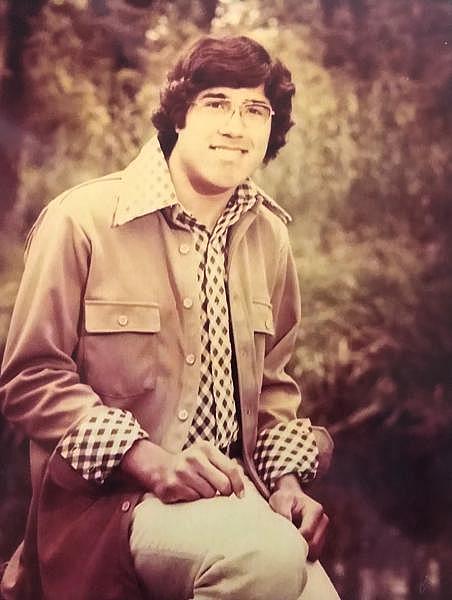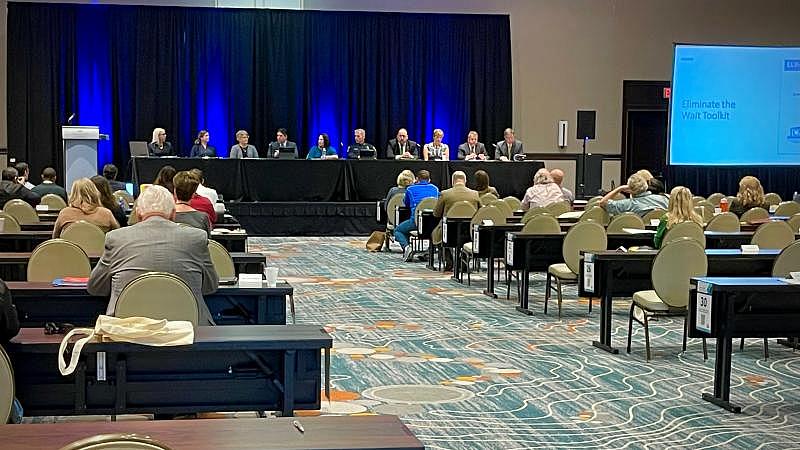Jail waitlist for mental health help hits new record. This plan proposes a statewide fix.
This project was produced as a project for the USC Center for Health Journalism's 2021 National Fellowship.
Other stories by David Barer and Josh Hinkle include:
Mental competency consequences: the hidden, unreliable data Texas tracks… or doesn’t
Wrong races, hidden names among data challenges our team faced with jail mental health project
Austin court’s redirection of those committing low-level crimes could be saving taxpayer money
Mental Competency Consequences: The Hidden and Unreliable Data Texas Tracks — Or Doesn't
State of Texas: Leaders consider ‘consequences’ of not tracking state hospital waitlist data
A state hospital death in restraints and seclusion: What happened to Justin Reeder?
‘Horrifying’ wait times for state hospital beds, official says
State mental hospital backlog grows, new record exceeds 2,500 waiting in jail
Despite waitlist record, leaders keep pushing ‘Eliminate the Wait’ plan for state hospitals
Thousands waiting in jail for state hospital beds, is help coming?

Investigative Summary:
For two years, KXAN investigators have explored a growing backlog of people in Texas jails who need mental competency restoration. While an advisory committee has largely focused on finding state hospital beds for that group, our team took a closer look at the backgrounds of individuals on the waitlist to determine trends experts say could help drive down numbers. Our research found data on this topic is often hidden or unreliable – a discovery sparking promise for change from state leaders. The resulting “Mental Competency Consequences” project is supported by the USC Annenberg Center for Health Journalism.
GEORGETOWN, Texas (KXAN) — Fernando Macias might not have understood why he was placed on a waitlist for a state hospital in 2018.
Macias was suffering from mental illness that culminated in a 28-hour standoff with local law enforcement and Texas Rangers at hi
A young Fernando Macias, prior to suffering from mental illness and decades before he would be shot and injured in a San Antonio standoff with law enforcement in 2018. Macias died the same year in Bexar County custody awaiting a state hospital bed. (Courtesy Walter Macias)
s San Antonio home. He and multiple officers were shot, and his mother was killed, according to court documents.
Macias, 61, was charged with multiple counts of attempted murder, but he was soon found incompetent to stand trial — mean
A judge ordered him to be sent to a state mental hospital for stabilization. That didn’t happen. Texas’ mental hospitals have been full for years. Macias was placed on a waitlist. He wasted away, refusing food and medication, until his death on Dec. 16, 2018, according to state and court records.ing he was dealing with mental illness so severe he couldn’t understand his case or aid in his own defense.
At the time of Macias’ death, there were roughly 730 people stuck in jail waiting for a state hospital bed. As of October 2021, that number had grown 150% to a new record of 1,838 people, according to state hospital officials.
State mental health leaders are working on a plan to reverse that trend.
Jennie Simpson, forensic director at the Texas Health and Human Services Commission, discussed the mounting number of people on the waitlist, calling it a “crisis,” in October at the Judicial Summit on Mental Health in Georgetown.
Simpson urged the summit audience to remember the individuals on the waitlist are people who need help.
“They are mothers; they are fathers; they are daughters; they are sons; and I really don’t want us to lose that humanity as we think about this crisis.”
Simpson is one of several state mental health officials pushing for widespread adoption of the “Eliminate the Wait” plan — a strategy to reduce pressure on the waitlist. HHSC and the Judicial Commission on Mental Health partnered to create the Eliminate the Wait plan.
//The goal is to “rightsize” competency restoration services. The plan comes with a toolkit that identifies root causes of the ballooning waitlist and provides checklists for different groups across the mental health and criminal justice spectrum — police, sheriffs, courts, prosecutors and defense attorneys — that have a hand in the process.
How Austin low-level crime court helps ‘frequent utilizers’ experiencing homelessness
Over the past two decades, there has been a 38% increase in the number of people found incompetent to stand trial, according to the Eliminate the Wait toolkit.
State leaders, law enforcement and mental health advocates unveil Texas Eliminate the Wait plan at the 2021 Judicial Summit on Mental Health in Georgetown. (KXAN Photo/Josh Hinkle)
The plan highlights three causes for the wait. One, people with mental illness or developmental disabilities are arrested despite diversion being available. Two, competency restoration service is a temporary and narrowly focused rehabilitation effort that does not create a treatment plan for long-term recovery and rejoining the community. Third, the process is inefficient, and people found incompetent to stand trial may be restored and return to jail only to mentally deteriorate again before their case concludes.
Solutions checklist
So, what can be done?
The plan pushes for developing materials to educate people in all steps of the process — court officials, jailers, mental health authorities, the public — to better divert people to assistance before they get caught in the criminal justice system. The plan also calls for increasing accountability: shining light on the costly toll of the competency restoration process, the millions of dollars paid by taxpayers and the thousands of hours of public safety hours.
Kristi Taylor, executive director of the JCMH, helped develop the checklists.
“This is an effort that needs to expand to every discipline working throughout the system,” Taylor said. “HHSC allowed us to reach the sheriffs who run the jails, law enforcement, mental health providers, and to create some of those relationships and communities where they may not be existing.”
Taylor said the toolkit is laid out in checklist form, using questions written in a personal way.
“Asking, ‘Are you doing this? Have you considered this?’” Taylor said. “Even if a community doesn’t have a resource, they could start that discussion about ‘How do we bring it here?’”
The Judicial Commission is acting on the plan now and has been providing hands-on training this year, she said.
“State hospital beds are a part of the solution, but they’re not everything,” Taylor said.
Correcting inefficiencies in the system can reduce the waitlist. That can be as simple as using email rather than the post office or picking a person up from the state hospital sooner than the two-week deadline, Taylor said.
Wrong races, hidden names among data challenges our team faced with jail mental health project
The problems created by the waitlist extend beyond the people waiting for beds and the state hospital system. Backing people up in jails also swells the costs and burdens on local jails, where resources are often scarce, according to the plan.
Dave Jahn, a former Denton County criminal court judge, told KXAN the plan is “revolutionary in its innovation for tying all of the entities required to move someone through the legal system once they become judicially involved with a mental health illness.”
Jahn said there could be more focus on diverting people from the waitlist who only got charged with a crime because they are mentally ill. It can be hard to differentiate between individuals who committed a crime only because they have a mental illness and people who have criminal intent and commit crimes but also have a mental illness, he said.
“There’s a very fine distinction between the two,” he said.
Mental competency consequences: the hidden, unreliable data Texas tracks… or doesn’t
For each step through the system a person with mental illness takes, the plan outlines steps to help provide mental health services and potentially divert them out of the system.
The state has to find new ways to reduce the waitlist because, as experts like Dr. Felix Torres said, Texas will not build itself out of this backlog.
“Even with the eventual increasing capacity, we will continue to fall short,” said Torres, HHSC’s chief of forensic medicine.
[This story was originally published by KXAN.]


